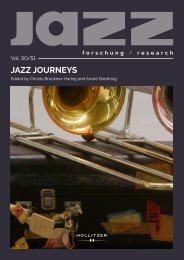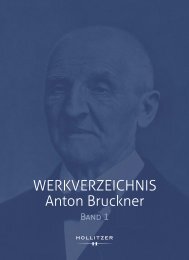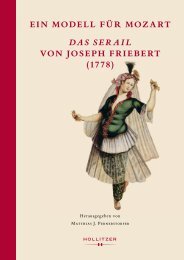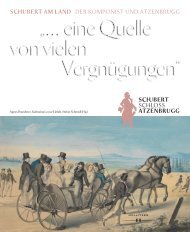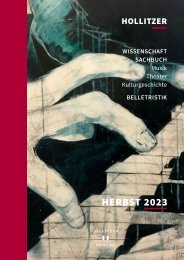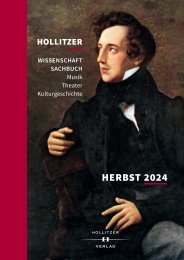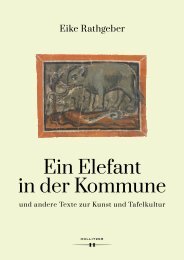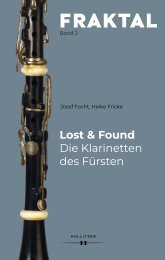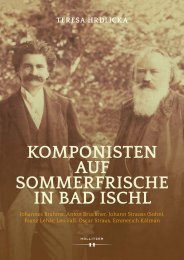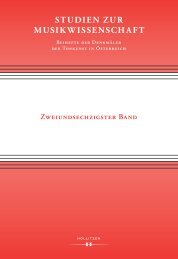Create successful ePaper yourself
Turn your PDF publications into a flip-book with our unique Google optimized e-Paper software.
If reading of the texts were limited to who the authors were, or if rereading of the<br />
texts were rejected within those paradigms in a counter-protest, the dimensions<br />
of approach would have remained within a limited framework, whereas the questions<br />
posed with regard to the depicted scene played a crucial role in understanding<br />
the implicit power that existed in the micro-levels of examining the texts,<br />
divorced from the author and vice versa.<br />
Another fundamental question concerned the materials. How, and at what<br />
point the materials would be used was equally as challenging as accessing them.<br />
In particular, the aggregate materials (copies of petitions, invoices, portraits, photographs,<br />
diary notes written on her scores, poems etc.) in Aral-Güran’s Personal<br />
Collections (the Güran family’s archive) required me to address this. In this regard,<br />
Beatrix Borchard’s Lücken schreiben Oder: Montage als biographisches Verfahren 20 not<br />
only provided answers to my questions on the position, importance, and function<br />
of the materials, but also introduced me to Walter Benjamin’s ‘montage technique’.<br />
Rolf Tiedemann, in the introduction of The Arcades Project (Passagen-Werk),<br />
which Benjamin wrote between 1927 and 1940, but did not complete, writes that<br />
Benjamin’s intention was to “display material and theory, quotations and interpretations<br />
in a position that would be distinguished from all kinds of conventional<br />
portrayal styles”, through which all weight would be on the materials and<br />
quotations, while theory and interpretation recede to the background. 21 In other<br />
words, the montage technique, while looking at larger structures – which I have<br />
applied, from time to time, to the events and concepts in order gain a broader<br />
perspective – is conducive to crystallisation via the analysis of the smaller structural<br />
elements that constitute the overall structure. 22 This approach was not only<br />
instructive in how to use the materials, but also had an impact on how I have assembled<br />
the divisions of the narrative in the presentation of my research. For example,<br />
materials such as Leyla [Saz] Hanımefendi’s poems, advertisements in periodicals,<br />
photographs, etc., are used as tools to examine the larger picture whilst<br />
its smaller building blocks are still in view. In the narrative, I have applied this<br />
technique when introducing the subject of exploring “<strong>Women</strong> Musicians in the<br />
Ottoman Empire” (Chapter III): materials such as lists of musicians (their names,<br />
addresses, and area of specialisation) printed in the Annuals of Commerce of the Orient,<br />
petitions that were found in the Ottoman State Archives, the decorations presented<br />
to women artists in the nineteenth and twentieth centuries by the Sultans,<br />
compositions dedicated to the dynasty, music scores etc., were used to explain the<br />
20 Beatrix Borchard, “Lücken schreiben Oder: Montage als biographisches Verfahren”, Biographie<br />
schreiben. Bödeker, Hans Erich (Ed.) (Göttingen: Wallstein Verlag, 2003). pp. 211–241.<br />
21 Rolf Tiedemann, “Dialectics at a Standstill. Approaches to the Passagen-Werk”, The Arcades Project,<br />
trans. Howard Eiland, Kevin McLaughlin (Cambridge, Massachusetts; England: The Belknap<br />
Press of Harvard University Press, 1999). 931.<br />
22 Ibid.<br />
28



